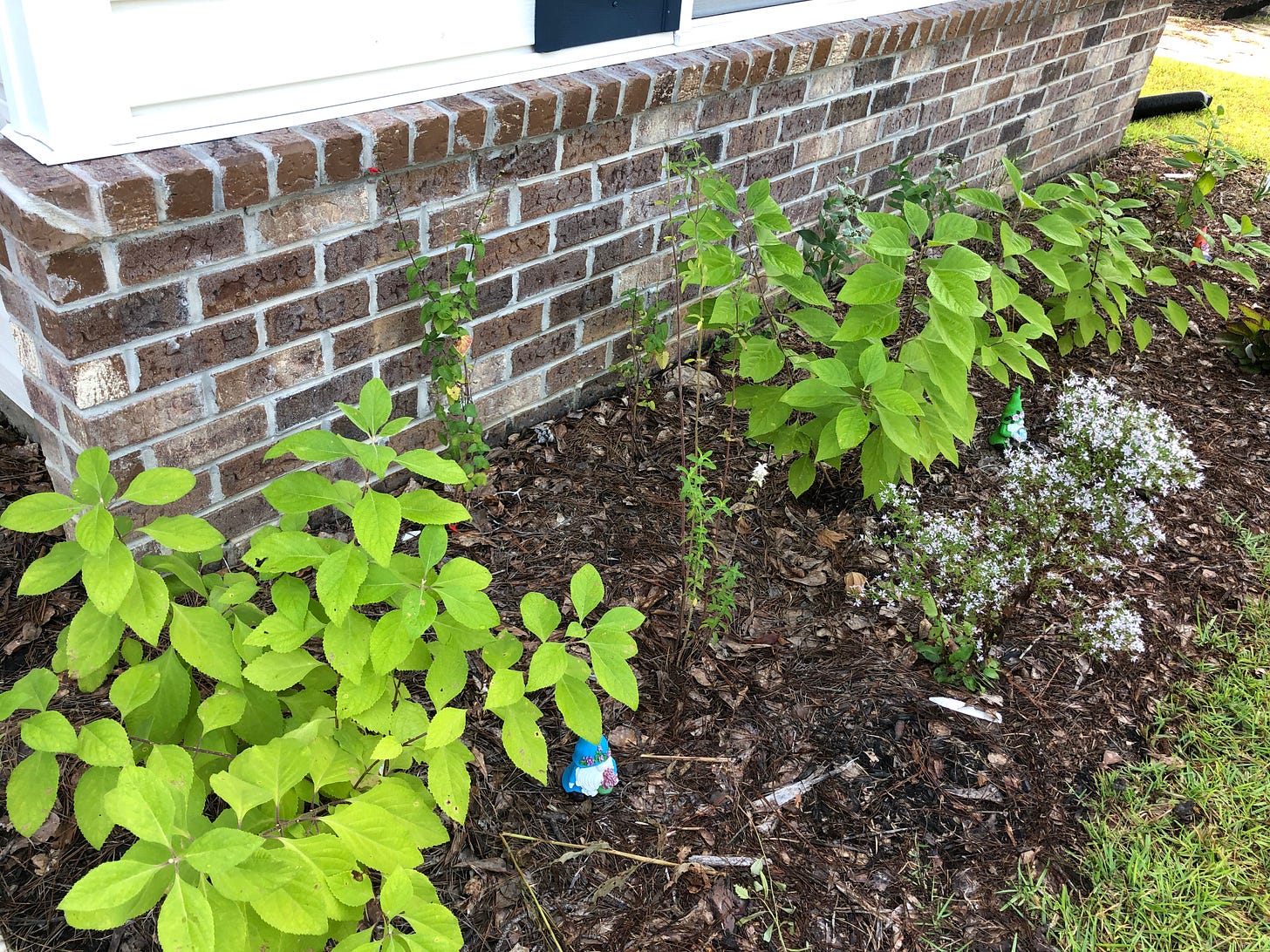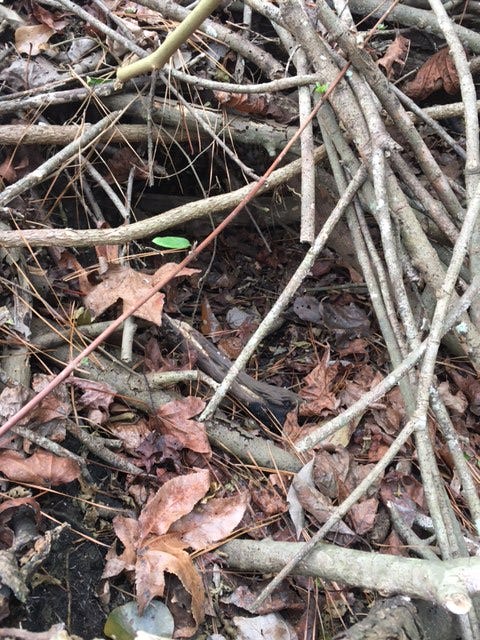It's That Time of Year Again: Don't Forget to Leave the Leaves!
Every October, I preach, "Leave the Leaves." Not only will it save you a lot of time and effort raking and bagging, but it will also make the critters you're sharing your yard with very happy.
Can you believe it? Autumn is just around the bend. Unfortunately, phase one of my dream of turning my yard into a pollinator paradise didn't go as planned. Looking on the bright side, I did have a lovely small garden in front of my office window. The beautyberry bushes surprised me by expanding until they've nearly taken over. Plus, I'll have some seeds from my scarlet sage, blue asters, bee balm, mountain mint, blackeye Susans, coneflowers, rattlesnake master, and coreopsis to expand my little plot next spring.
The plants in the raised gardens didn't do as well. Some fleabane, bitter sneezeweed, and other transplants still have a little spunk left in them. As for the transplants I planted directly into the ground – some died, others lived, but they don't seem too thrilled to be here.
The problem is my soil. It's rock-hard clay with some sand on top. It desperately needs help! You all know I'm not into artificial fertilizers. I want to feed my soil with what it really craves – nutritious organic matter. The best source for that is leaves.
There is a reason behind everything that happens in nature. It's all part of the balance between the flora and the fauna. If left alone, every element in this cycle of life and death benefits the environment. For example, when leaves finish fulfilling their summer job, they fall to the ground to provide shelter for the insects and wildlife over winter. At the same time, they break down and nourish the soil so that new life will pop up in the spring.
That's why it's so important to leave the leaves.
Nature's Fertilizer
Leaves are beneficial to your lawn and garden. The organic material feeds the soil as it breaks down. If the layer of leaves is too thick and smothers out the grass, rake some of the leaves out so that you have a thinner layer. Chopping leaves is debatable. Some experts say cutting them up is fine, yet others say no. There may be creatures sheltering in the leaves.
It stands to reason that you don't have to leave the leaves exactly where they fell. They can be moved to wherever you want them. Gather them to use as mulch in the garden bed and around plants, trees, and shrubs to suppress weeds, retain moisture, and boost nutrition. However, don’t stack them up so high that oxygen can’t flow through the pile. A few inches is all you need.
Leaves can also be raked into small piles to decompose. The resulting leaf fertilizer can be used as you need it to improve the soil. Mixing leaves, grass clippings, and other green materials make an excellent compost. Keep it moist and well mixed; it will be great for your garden next spring.
Wildlife Habitat
But that's only part of the story. Turtles, toads, birds, mammals, and invertebrates rely on leaf litter for food, shelter, and nesting material. Many moth and butterfly caterpillars overwinter in fallen leaves before emerging in spring. Some creatures take advantage of the ground cover. The cocoons and chrysalises of Luna moths and Swallowtail butterflies are cleverly camouflaged as dried leaves, so they blend in with the "real" leaves. The eggs of stick insects are disguised to look like seeds. Ants take the "seeds" back to their nests and bury them, where the baby stick insects hatch safely beneath the soil.
So many critters rely on leaves and other organic materials to protect them, their eggs, larvae, cocoons, and chrysalises from the elements during the winter. You can help wildlife by leaving a part of your lawn as nature intended with branches, sticks, and leaves in place so the wild things have a place to overwinter.
Removing Leaves Pollutes the Air
There's another thing to consider before removing the leaves in your yard. Gas-powered machinery collecting, hauling, and disposing of leaves emit massive amounts of carbon dioxide, needlessly adding to the CO2 already being spewed into the atmosphere.
People believe that organic waste will break down wherever it is dumped. Unfortunately, that's not true when massive mountains of yard waste clog up the landfills. According to the U.S. Environmental Protection Agency, leaves and other yard debris account for 33 million tons of solid waste dumped annually.
With each day's addition to the mounds, the material becomes so compacted that air cannot circulate, depriving the accumulated debris of the oxygen it needs to decompose naturally. Instead, this organic matter releases methane, another greenhouse gas.
The smell of burning leaves has always been a pleasant sign that autumn has finally arrived. But, even though I cherish the memories of jumping into the freshly raked piles of leaves or waiting for the flames and dodging the plumes of smoke, I no longer carry on this tradition. Instead, I've learned how leaves play such a vital role in our environment – plus burning emits air pollutants.
There is no way to eliminate unwanted leaves that aren't harmful to the environment unless you give the bags of leaves to someone who will use them in their garden or landscape as mulch or fertilizer.
Now that you know how valuable those leaves covering your lawn genuinely are, make it a new tradition to leave the leaves. Then, when you step out the door this winter, think of all the activity going on right under your feet and be glad of the small part you played in making it possible.
~~~~~~~~~~~~~~~~~~~~~~
Dear Reader,
I'd be ever so grateful if you would take a few minutes to recommend Let's Get Our Hands Dirty to your followers on Substack and other social media platforms.
Thank you!
Greta
---------------------------
Let's Get Our Hands Dirty is a reader-supported publication. This post is free as are all my posts. Please subscribe so you can receive notification when new articles are published. I'd love for you to become a part of our nature-loving family. Basic subscriptions are free, but if you sign up for a paid subscription as a love offering, that would be wonderful and greatly appreciated!
Have a fabulous day,
Greta
Please use the buttons below to Like, Comment, Restack, and Share my post on Substack and other social media platforms.
THANK YOU SO MUCH!








Love reading your articles, and I don't even have a patch of ground to call my own! Hey, a girl can dream!
Great advice - and can even be time saving. I always leave the leaves on until spring when all I do is check that they haven't clumped too much for the plants to get through. The ones on the driveway were layered into the compost to add later.
I'm sorry your efforts were disappointing but we both know that amending the soil takes a few years. I hope you'll see some improvement next year.